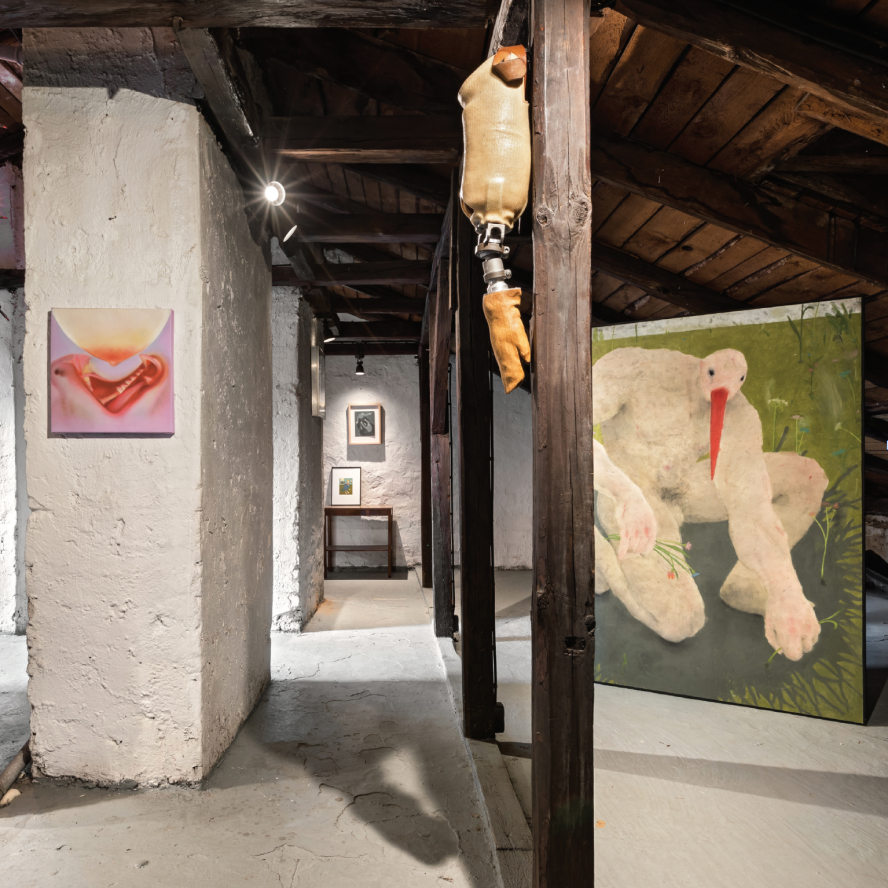94%
(2023)
61 x 13 x 15 cm
Wood, steel, synthetic material (prosthesis)
We have a lot in common, starting with a similar genetic code that makes increasingly advanced attempts at xenotransplantation possible. In 2022, a pig’s heart was first transplanted into a terminally ill man, with which David Bennett, a handyman from the state of Maryland, survived for two months. A year later, a pig heart beat in the chest of a navy veteran named Lawrence Faucette for two months. In 2024, in Massachusetts, Richard Slayman survived seven weeks with a transplanted pig kidney. Shortly after the transplant, when the kidney first began to function, Dr Tatsuo Kawai, who performed the operation, said: “it was the most beautiful kidney I have ever seen”. Many medical research centres around the world simulate the reactions of various pig organs in humans. Pig skin and bones are already being used for transplants.
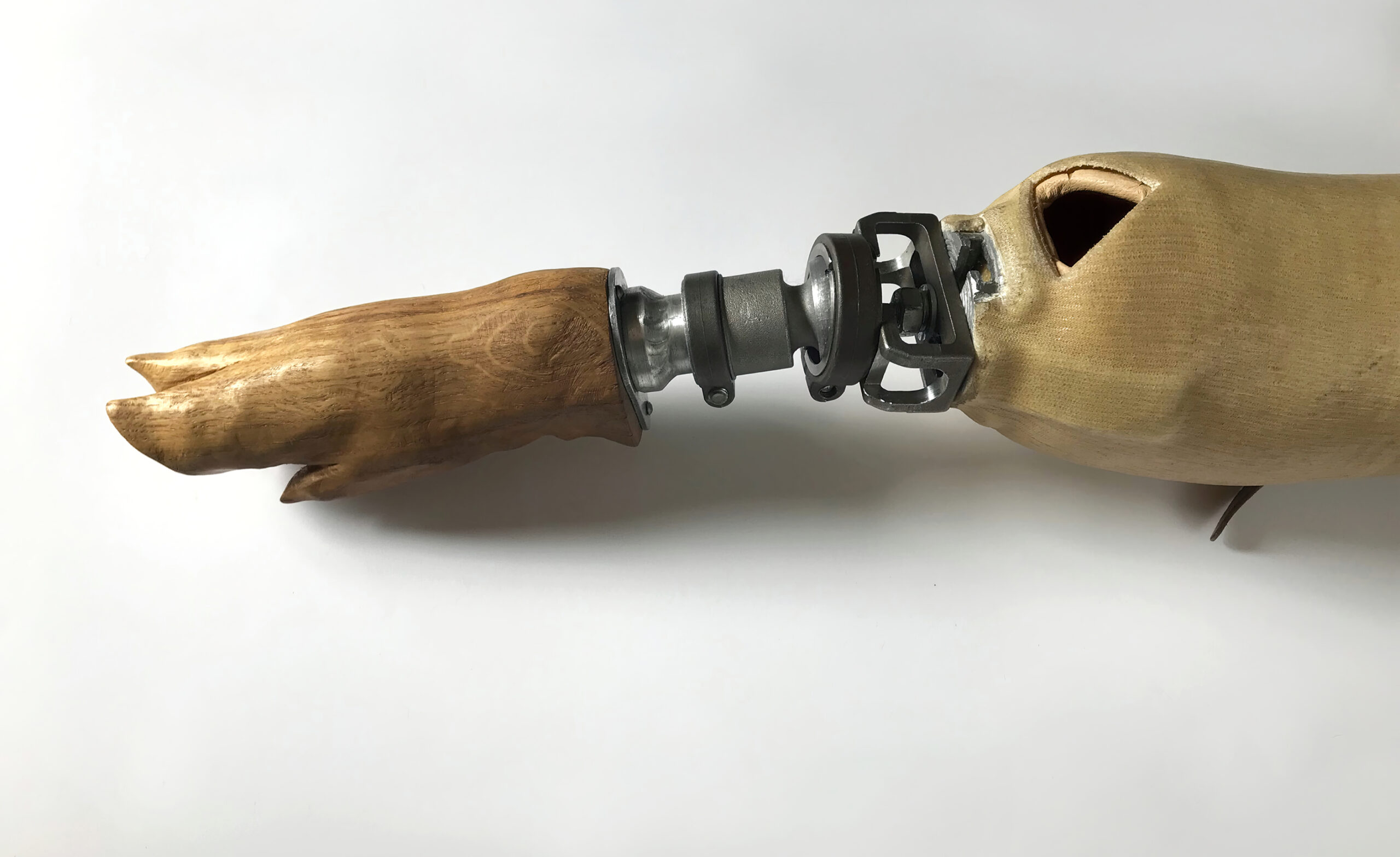
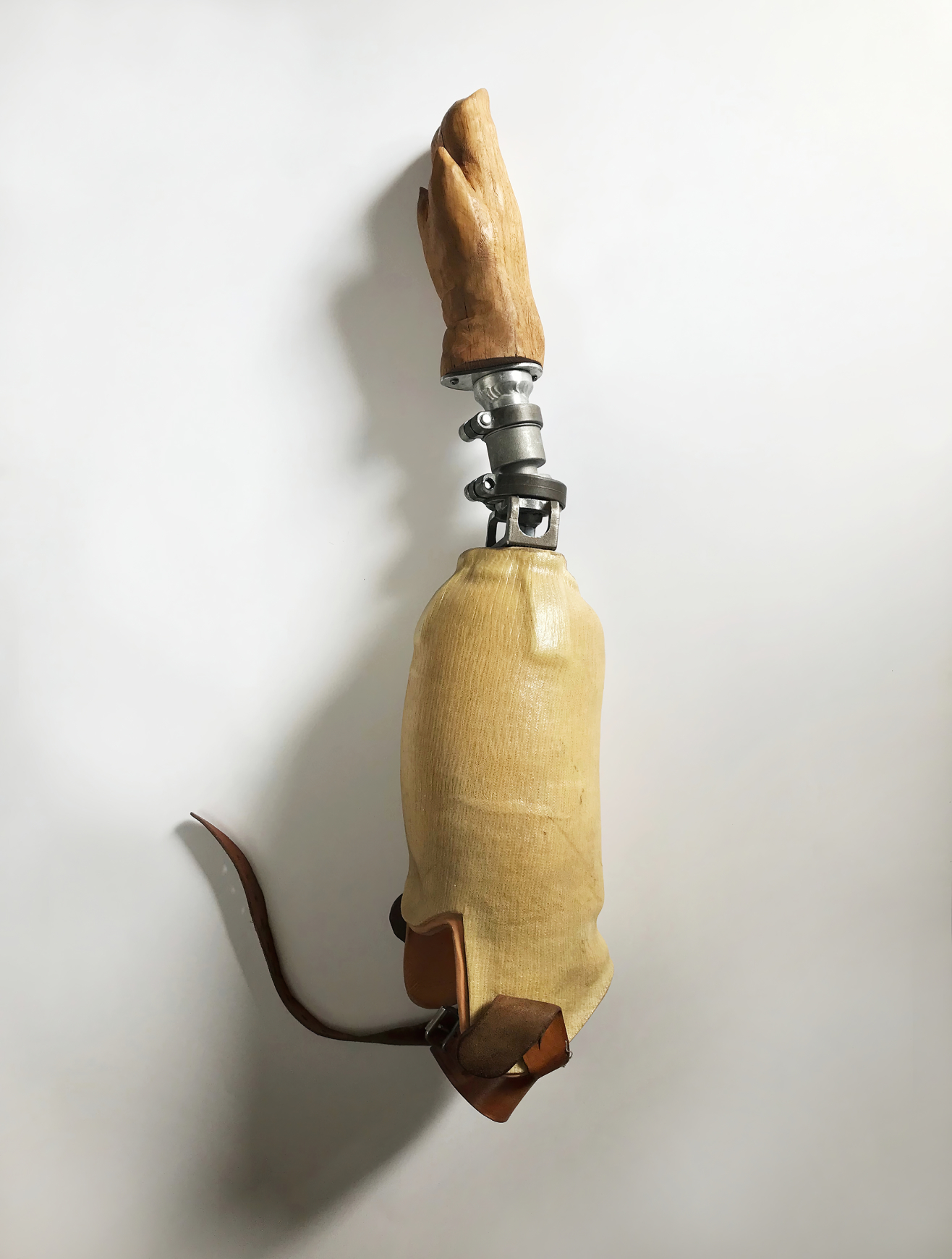
The 94% similarity in title is not limited to genetics. Behavioural tests show that pigs are among the most intelligent animals next to chimpanzees and dolphins. The cognitive abilities of a pig are comparable to a three-year-old human. Pigs learn from each other, sympathise and form social bonds, and respond to their name. They feel joy, sadness, can take offence, explore the world and play games. Still, it is easier to see the 6% difference between pigs and humans. By combining a prosthetic human leg with a pig’s hoof, Ida creates a teasing metaphor for unequal relationships. By juxtaposing a mechanical substitute for lack, the sign of a phantom presence with a physical part of an animal body, she forces us to answer not so much aesthetic but ethical questions.
Paweł Brylski
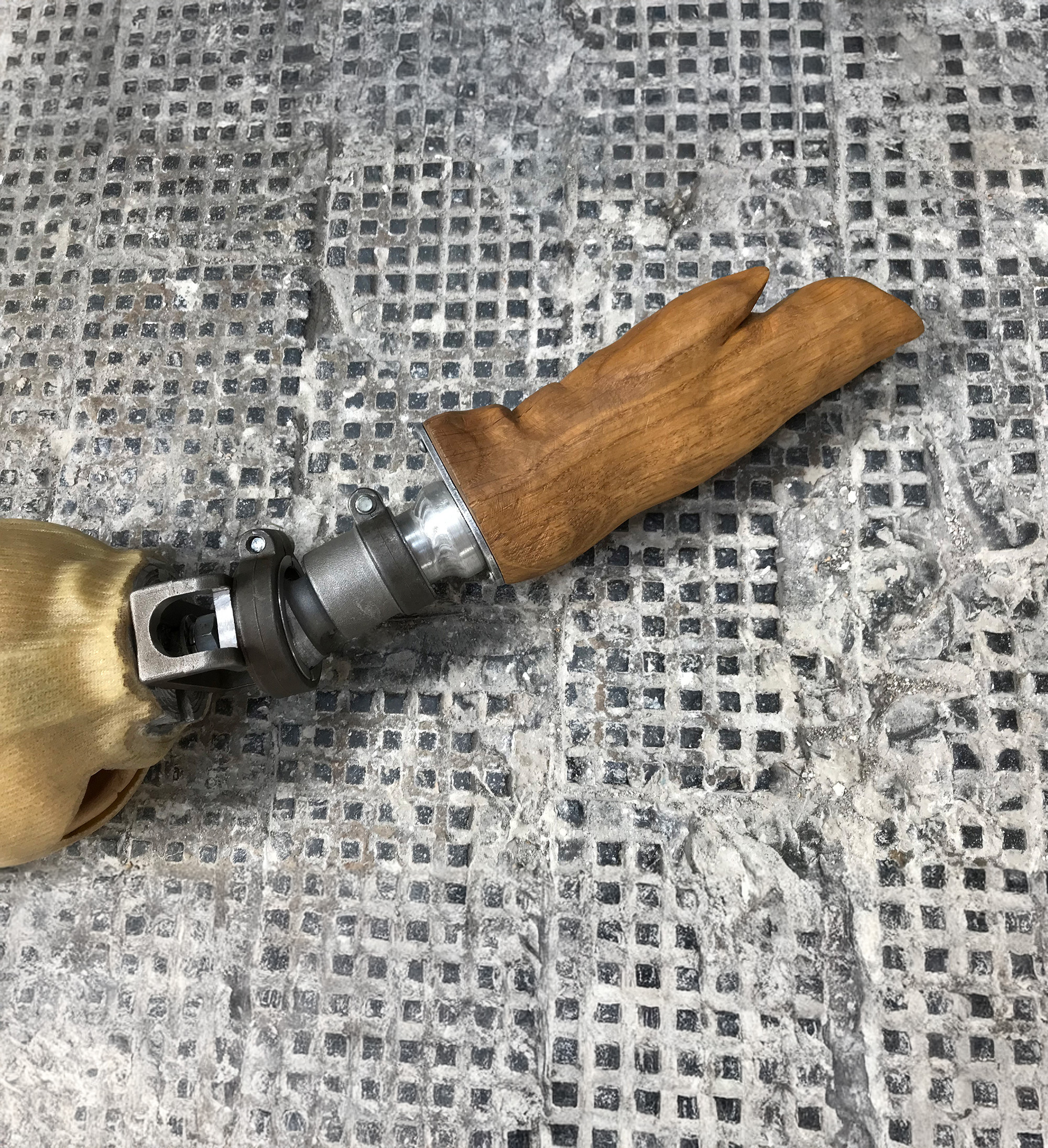
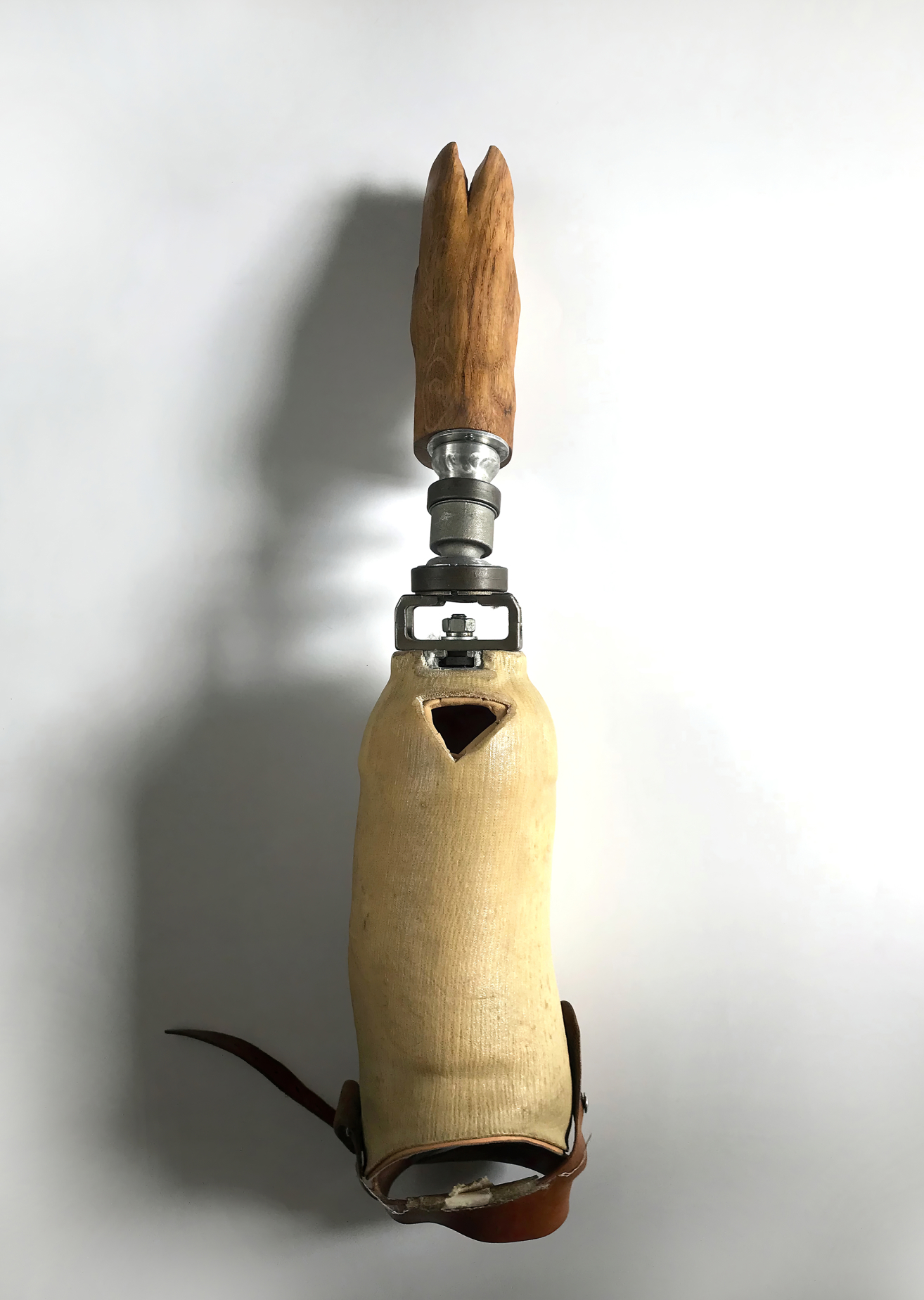
EXHIBITIONS 
Oneiric reality
oryginal tittle: “Oniryczna rzeczywistość”
Emi Art Warsaw, 2024
Curator: Olga Mzhelskaya
Co-curator, producer: Michał Jeremi Strzelecki
Photo: Wojtek Ciszkiewicz

